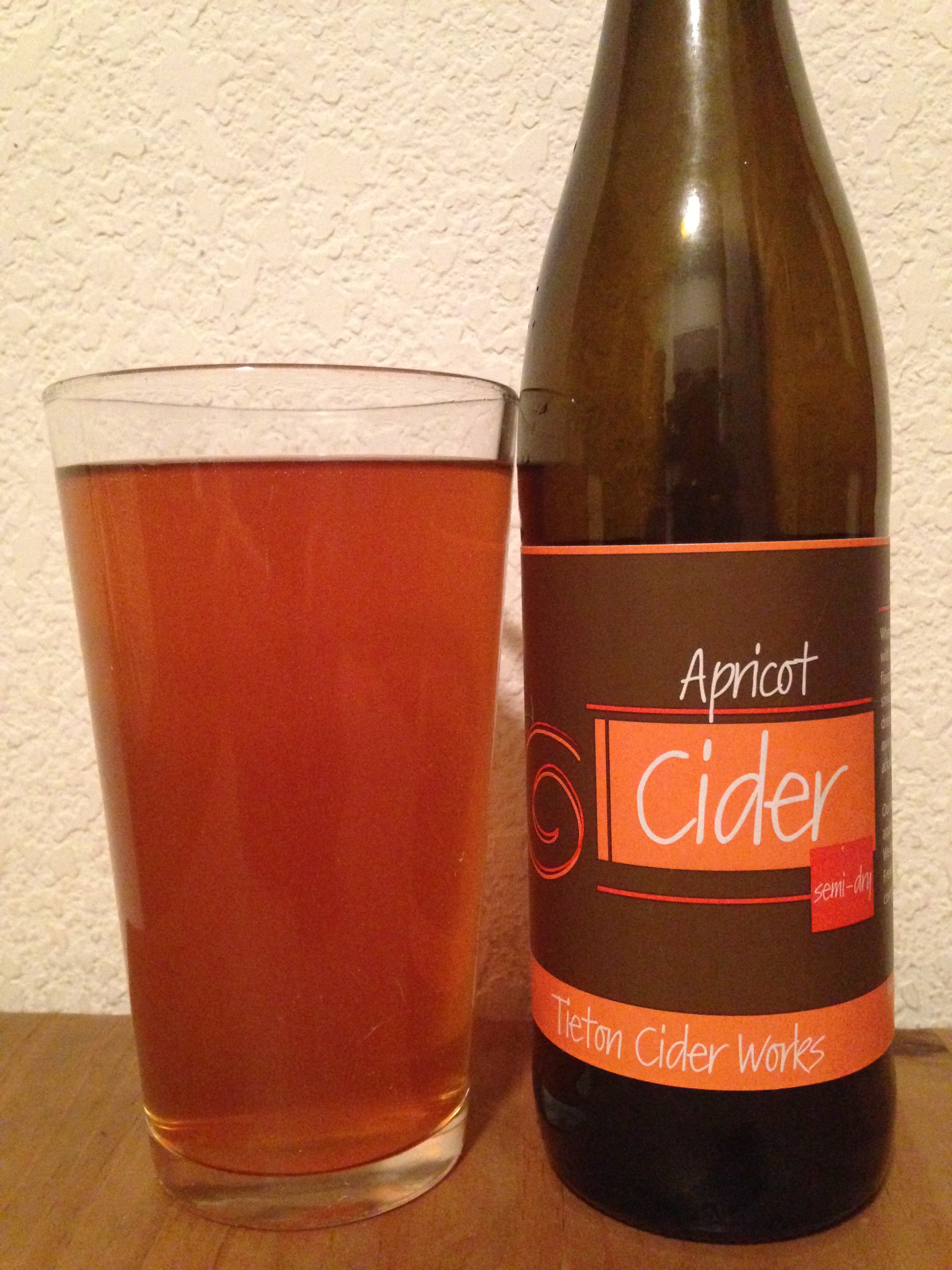Hard Cider Review: Apricot Semi-Dry Cider by Tieton Cider Works

This week I was fortunate in that a friend, Joe, visited from California and brought me a few ciders from Tieton Ciderworks of Tieton, WA–which is about 30 minutes away from Yakima. The first one I tried is the Apricot Cider–a semi-dry hard apple cider made with–you guessed it–apricots.
Apricot dominates the flavor of this cider, but there’s a hint of what appears to be a relatively complex apple cider underneath with makes it a lot more interesting than, say, a straight-up apricot wine. Sharply acidic, you’re left with a bright, lingering aftertaste that clears the palate completely after the initial flavor fades. According to Tieton, they are ‘infusing’ the cider with apricot, implying that they are adding it post-fermentation instead of up front. This might help explain the perception of high remaining acidity, as some fruit acids will break down if the fruit is added at initial fermentation…I’m not sure if the same will happen when it’s added after the fact.
This would be a great cider to pair with heavy, greasy, or rich foods, as its sharpness would cut right through them–Tieton recommends pairing it with soft or blue cheese. It’s a bit too acid to be a light, summer refresher–there’s a tiny bit of acid burn to it as it goes down…pleasant enough when drunk slowly and paired with foods, but you wouldn’t want to quaff this by the bottle…well, unless you didn’t have any better alternatives, in which case this would still be better than many.
All in all this is a great cider. It’s not what you’d reach for when you want the bitter, woody, and earthy cider experience–there’s a little of that lurking underneath, but mostly it’s a tart apricot bomb–but it showcases the range of what good cider can be. It’s a good execution on a potentially fraught concept–that of mixing cider with other fruit, spices, berries, pumpkin, and the like–I haven’t had many ciders in this vein that I liked (with pumpkin cider being a particularly bad standout so far); Tieton Apricot Cider tops the list for me in this category so far.
Testing:
One of the advantages of having homebrewing equipment lying around is that, in the absence of disclosed acidity or sugar content in a given product, you can simply test these for yourself. I tested the sugar level of the apricot cider with a hydrometer, test jar, and specific gravity reference, and if I worked the numbers backward correctly from the 1.020 gravity, there’s about 17g of sugar per 12oz serving in here. That’s interesting because in other, less complex, less tart ciders like, say, Angry Orchard, a similar level of sugar content comes across as overly sweet rather than as semi-dry. So the perception of sweetness of a given sugar quantity can definitely vary depending on what else is going on in the cider. Crispin Brown’s Lane is another good example of this effect, in which the bitter and earthy aspects mask what would otherwise seem like a very large sugar content.
For acidity, I used some wine-range pH strips–these are decent for cider as they yield better precision than full-spectrum pH stripts–and the pH was 3.4. This is right in the middle of the 3-3.8 range that is often recommended for cider, so it appears that the perception of acid is not strictly pH-driven…most likely it has to do with the proportion of different acids–malic, lactic, etc–that remain in the finished product.
Miscellaneous:
Because my home state of Colorado grows quite a lot of good stone fruit–apricots, peaches, and cherries in particular–sampling this cider has also implanted a desire in me to make hard cider with these additions, and to hunt around to see what my region is producing along these lines. I’m excited to see such unique, regional ciders being produced–what better way to capture the spirit of the place than through local ciders?
For its part, Tieton seems to share this way of thinking.
–
Thanks for visiting The Cidersage Blog. If you found this content to be useful, consider subscribing via the Subscribe link in the side bar, and be sure to visit our resources and tutorials pages for more in-depth hard cider and mead information.
Leave a comment